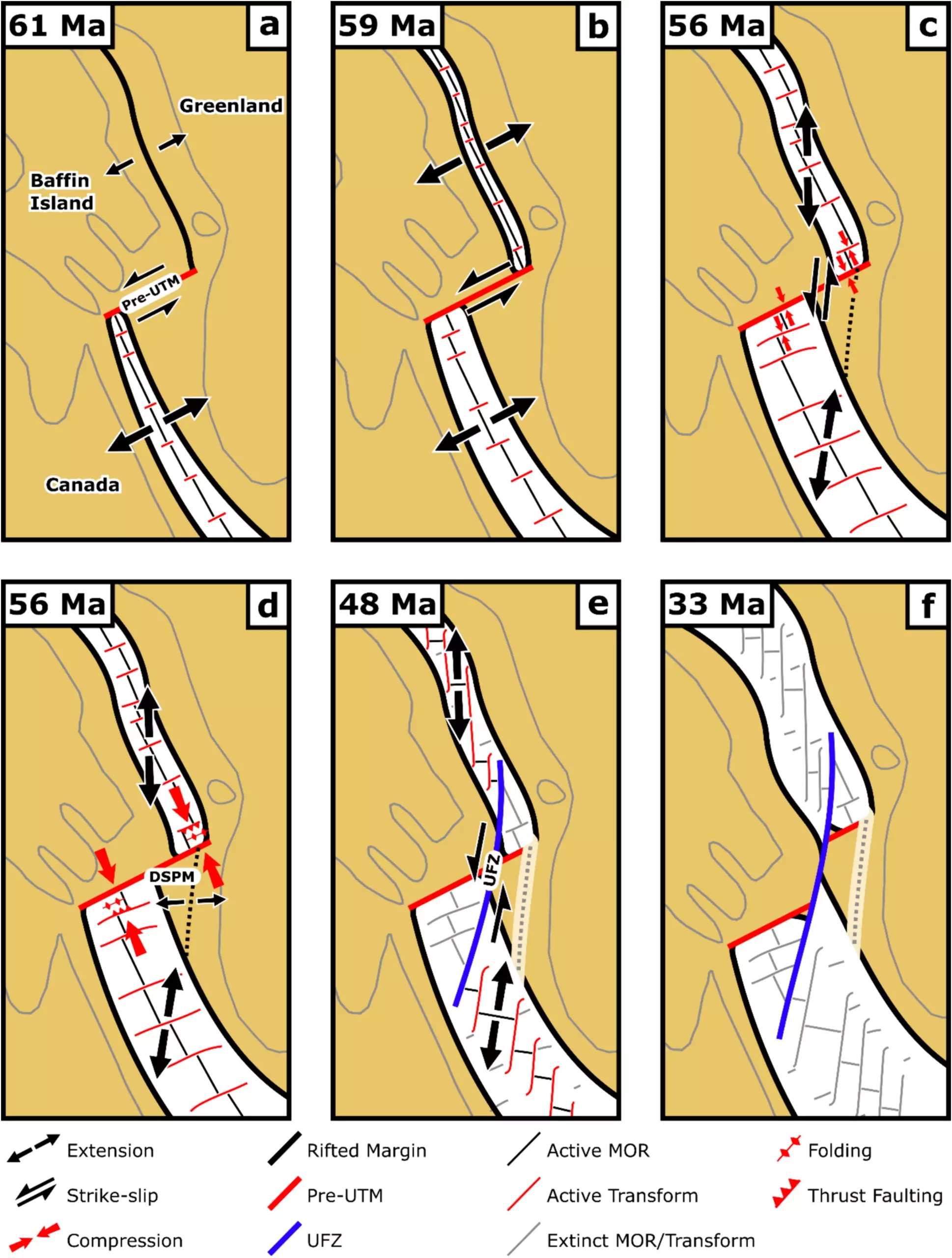Plate tectonics play a crucial role in shaping the Earth’s surface, with the movement of lithospheric plates leading to seismic activities, volcanic eruptions, and the formation of mountain ranges. One intriguing plate boundary lies between Canada and Greenland, giving rise to the Davis Strait seaway connecting the Labrador Sea to Baffin Bay. Within this region, a unique geological feature has been identified – the Davis Strait proto-microcontinent. A recent study published in Gondwana Research delves into the formation of this enigmatic microcontinent, shedding light on its origins and significance in the field of geology.
The research team, comprising of Luke Longley, Dr. Jordan Phethean, and Dr. Christian Schiffer, embarked on a journey to unravel the mysteries of the Davis Strait proto-microcontinent. Based at the University of Derby in the UK and Uppsala University in Sweden, the researchers utilized a combination of gravity and seismic reflection data to trace the evolution of this geological anomaly over a span of approximately 30 million years. Their collaborative efforts have resulted in a comprehensive reconstruction of the plate tectonic movements that led to the formation of the proto-microcontinent.
Dr. Phethean emphasizes the importance of studying microcontinent formation in geological research, highlighting the relevance of past events in understanding present-day geological processes. The unique geological setting of the Davis Strait region provides an ideal natural laboratory for investigating microcontinent formation, offering insights into the mechanisms driving crustal movements and the potential for future evolution. By analyzing the orientation and age of faults associated with rifting, the researchers have been able to piece together a comprehensive timeline of the proto-microcontinent’s formation.
Key Findings
The study reveals that initial rifting between Canada and Greenland commenced around 118 million years ago, during the Lower Cretaceous period. Seafloor spreading in the Labrador Sea and Baffin Bay began approximately 61 million years ago, marking the onset of significant geological transformations in the region. The pivotal period between 49-58 million years ago witnessed a shift in the orientation of seafloor spreading, leading to the separation of the Davis Strait proto-microcontinent from the mainland. By around 33 million years ago, ocean spreading ceased as Greenland collided with Ellesmere Island, culminating in the integration of Greenland into the North American plate.
Implications of the Study
The identification of the Davis Strait proto-microcontinent based on crustal thicknesses provides valuable insights into the process of microcontinent formation. This research extends beyond the boundaries of the Davis Strait region, offering applicability to other microcontinents worldwide. By studying the calving of microcontinents from continental crust, such as the Jan Mayen microcontinent northeast of Iceland and the East Tasman Rise southeast of Tasmania, researchers can gain a deeper understanding of the geological forces at play in shaping the Earth’s lithosphere.
The formation of the Davis Strait proto-microcontinent serves as a testament to the dynamic nature of the Earth’s crust and the intricate interplay of tectonic forces. Through meticulous research and innovative methodologies, scientists are unraveling the geological puzzle of microcontinent formation, paving the way for a deeper comprehension of our planet’s ever-changing landscape.


Leave a Reply